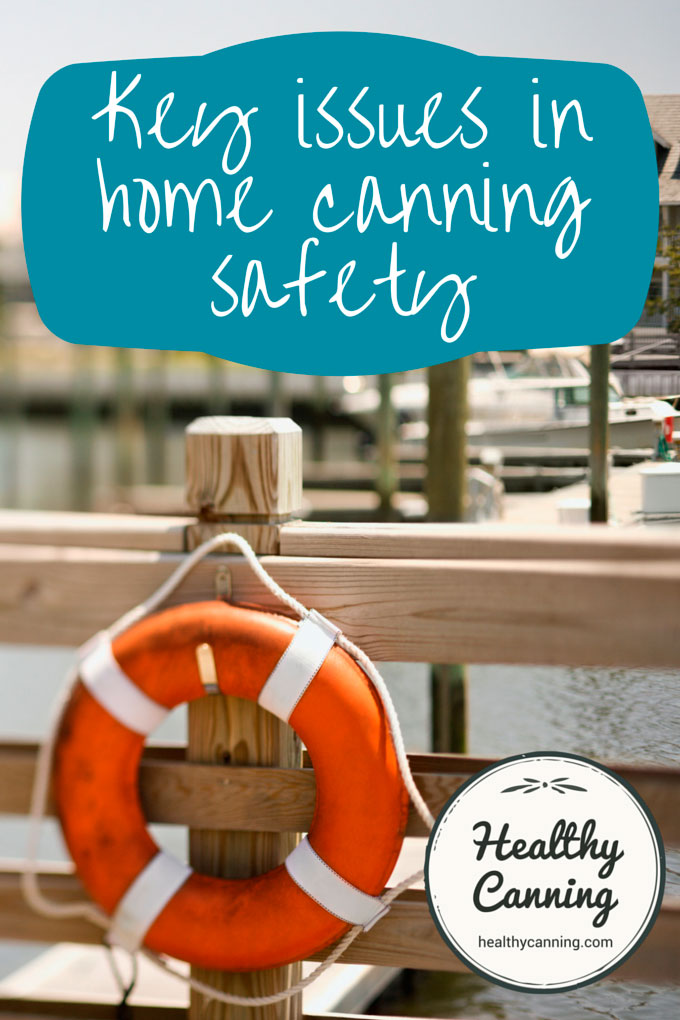Healthy canning must first and foremost be safe canning. If a food is not safe to eat, worrying about the salt and sugar levels, or oregano versus rosemary for herbs, would be like polishing the deck chairs on the Titanic.
Following are the core, fundamental, big bullet point issues that have to be considered when doing home canning: the key ones that would be at the top of your list if you only had 60 seconds to pass on some safe canning knowledge bullet points to someone.
The core issues
The core issues are the correct method of processing for the food you are canning, for the correct amount of time.
To make sealed jars of food safe on a shelf, you need either:
(a) to kill off some baddies with heat and then paralyze the rest (with high acidity aka a low pH level ) so that they can’t do anything, OR
(b) to kill ’em all off with the extreme heat they get inside a pressure canner.
Use the correct method for the food in question
1. Use one of the three acknowledged safe processing methods, either water bath canning, or steam canning, or pressure canning.
2. Of those three methods, use the one that is right for the food product you are canning. (Your tested recipe will tell you.)
Use water-bath or steam canning for high acid (aka low pH) foods. For low-acid foods (such as meat, or plain veg), you use pressure canning.
There are no other choices or combination of choices in the world of “healthy canning.”
- When you are water bathing (or steam canning), you have to pay attention to both heat and acidity / pH level. The blast of heat during processing the jar kills off the baddies (listeria, salmonella, etc) that can survive high acidity. The high acidity (aka low pH) level then inactivates the ones for which the boiling water temperature wasn’t sufficient to kill outright (the botulism spores);
- When you are pressure canning, you have to pay attention instead to density, because pressure canning is purely about the right heat reaching everywhere. Is the consistency of the product too dense to ensure proper heat penetration to each part of the jar?
For either form of processing, use the full, correct processing time that you have a documented source for, not just a “guessed at” time.
Test your seal
At the end, before the jar goes on the shelf, remove the canning ring and test your seal.
Did you get a secure seal that over time you can verify has held securely?
If a seal has come loose or off during storage, discard the food and do not even think of tasting it. People have nearly died from doing that.
Next step
And finally, just as the final second of our 60 seconds was about to expire, we’d cheat and tell the person to download a free copy of the USDA Complete Guide, thereby using that final second to give the person access to just about everything there is to know!
Other considerations
There are of course many, many other smaller, sub-bullet point issues that play an important role in food safety as well, such as reducing the bacterial load before you start, using safe drinking water, correct operation of your equipment, drawing on reliable sources, etc. We have covered those sub-points in the topics where they are relevant. This was just a “what would you tell someone curious at a party” scenario.


LAURA WHEELER
Can I chop up my peppers and onions and freeze or keep in the fridge until I am ready to can?
Healthy Canning
Keep in fridge for a few days, sure. Depending on what you are making, though, you might wonder if the quality would be okay after freezing and thawing to then also can them. Frozen and thawed onion and pepper would be fine in a chutney, which is boiled for hours anyway before canning. Do your measurements of the items while still frozen.